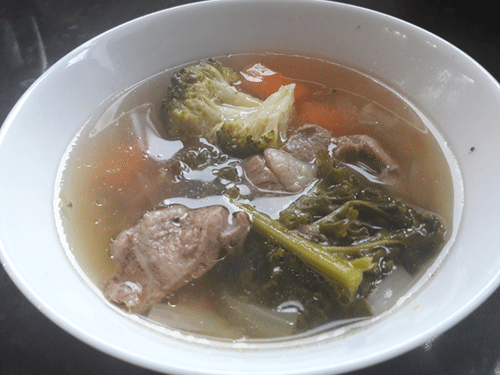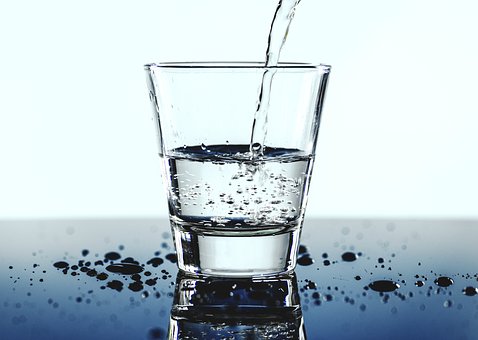Effectiveness of Fortification of Drinking Water With Iron and Vitamin C in the Reduction of Anemia and Improvement of Nutritional Status in Children Attending Day-Care Centers in Belo Horizonte, Brazil
© Authored by PubMed
© HealthyMuslim. See Terms and Conditions
Copy Link
Email
Print

Vitamin C is water-soluble, and probably the most famous of all the vitamins. Even before its discovery in 1932, physicians recognised that there must be a compound in citrus fruits preventing scurvy, a disease that killed as many as 2 million sailors between 1500 and 1800. Later researchers discovered that man, other primates and the guinea pig depend on external sources to cover their Vitamin C requirements. Most other animals are able to synthesise Vitamin C from glucose and galactose in their body. The most prominent role of Vitamin C is its immune stimulating effect, which is important for the defence against infections such as common colds. It also acts as an inhibitor of histamine, a compound that is released during allergic reactions. As a powerful antioxidant it can neutralise harmful free radicals and aids in neutralising pollutants and toxins. Thus it is able to prevent the formation of potentially carcinogenic nitrosamines in the stomach (due to consumption of nitrite-containing foods, such as smoked meat). Importantly, Vitamin C is also able to regenerate other antioxidants such as Vitamin E. Vitamin C is required for the synthesis of collagen, the intercellular 'cement' substance which gives structure to muscles, vascular tissues, bones, tendons and ligaments. Due to these functions Vitamin C, especially in combination with zinc, is important for the healing of wounds. Vitamin C contributes to the health of teeth and gums, preventing haemorrhaging and bleeding. It also improves the absorption of iron from the diet, and is needed for the metabolism of bile acids, which may have implications for blood cholesterol levels and gallstones. In addition, Vitamin C plays an important role in the synthesis of several important peptide hormones and neurotransmitters and carnitine. Finally, Vitamin C is also a crucial factor in the eye's ability to deal with oxidative stress, and can delay the progression of advanced age-related macular degeneration (AMD) and vision-loss in combination with other antioxidant vitamins and zinc.
Rocha Dda S, Capanema FD, Netto MP, de Almeida CA, Franceschini Sdo C, Lamounier JA. Effectiveness of fortification of drinking water with iron and Vitamin C in the reduction of anemia and improvement of nutritional status in children attending day-care centers in Belo Horizonte, Brazil. 1. Food Nutr Bull. 2011 Dec;32(4):340-6.
Rocha Dda S, Capanema FD, Netto MP, de Almeida CA, Franceschini Sdo C, Lamounier JA. Effectiveness of fortification of drinking water with iron and Vitamin C in the reduction of anemia and improvement of nutritional status in children attending day-care centers in Belo Horizonte, Brazil. 1. Food Nutr Bull. 2011 Dec;32(4):340-6.
BACKGROUND: Because of the high prevalence of iron-deficiency anemia in Brazil, individual control measures tend to be ineffective, and fortification of foods with iron is considered the most effective method to fight anemia. OBJECTIVE: To evaluate the effectiveness of fortification of drinking water with iron and Vitamin C in the reduction of anemia in children in day-care centers in Belo Horizonte, Brazil. METHODS: This before-and-after study evaluated 318 children aged 6 to 74 months. Identification data and data on socioeconomic variables were collected; anthropometric and biochemical measurements were performed before and after 5 months of fortification of water with 5 mg of elemental iron and 50 mg of ascorbic acid per liter. The fortified water was used for drinking and cooking at the day-care center. Wilcoxon's nonparametric test was used to evaluate the differences in continuous variables, and McNemar's test was used to compare the prevalence rates of anemia. RESULTS: The prevalence of anemia decreased significantly from 29.3% before fortification to 7.9% at the end of the study, with a significant increase in hemoglobin levels. Reductions in the prevalence rates of stunting and underweight were observed. CONCLUSIONS: Fortification of water with iron and Vitamin C significantly reduced the prevalence of anemia and improved nutritional status among children attending day-care centers.
Link to this article: Show: HTML Link • Full Link • Short Link
Share or Bookmark this page: You will need to have an account with the selected service in order to post links or bookmark this page.





|
Related Articles:
- Low Vitamin A and C Levels Associated with Increased Asthma Risk
- Top Tips to Beat Stress
- Vitamin C Protects Against Gout
- Nutrients and Superfoods for Healthy Skin
- Grapefruit Can Promote Healthy Gums
- Goji Berries: A Great Superfood
- Book: Curing the Incurable: Vitamin C, Infectious Diseases, and Toxins - Thomas E Levy
- Higher Plasma Vitamin C Levels Reduce Risk Of Developing Type 2 Diabetes
- What Foods Are Good For Your Eyesight?
- Dr Linus Pauling, Vitamin C Infusions and Cancer
You must be registered and logged in to comment.
Most Popular
Latest Articles
Popular Subjects
Health, fitness and longevity
Based upon the principles of health
in the Qur'an and Prophetic Traditions.
HealthyMuslim.Com
There are two bounties in which
most people lose out: good health
and free time. Al-Bukhari.
The information on this site is provided for educational purposes only. It is not intended as a substitute for professional advice of any kind.























